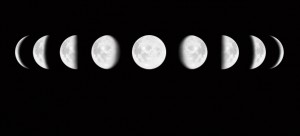Dr Andrea Rehling
Leibniz-Institute of European History (IEG) Mainz
Project: Knowledge of the World – Heritage of Mankind: The History of UNESCO World Heritage
http://www.ieg-unesco.eu
In March 2013, the travel agent Hurlingham Travel in London unveiled the “most expensive and craziest” package holiday ever. The holiday is nearly two years in duration, costs around 1.2 million euros for two people, and includes visits to all of the then 981 UNESCO World Heritage sites in 160 states around the world. As its focus is on architectural remains and monuments, it has the character of a visit to an open air museum. To this extent, the journey offered also includes a kind of time travel that follows one specific narrative of time and history. The World Heritage list features the remnants of a cultural and natural history canonized by UNESCO and its advisory organizations This canon is based on a scientific concept of time which has emerged since the 1960s. It replaced the idea of the arrow of time, which was the temporal concept upon which the idea of linear successive stages of development had been based. The latter was replaced by a broader, pluralized, but nevertheless scientific, synchronized and naturalized understanding of time.
This canon is based on a scientific concept of time which has emerged since the 1960s. It replaced the idea of the arrow of time, which was the temporal concept upon which the idea of linear successive stages of development had been based. The latter was replaced by a broader, pluralized, but nevertheless scientific, synchronized and naturalized understanding of time.
During the period when the Convention Concerning the Protection of the World Cultural and Natural Heritage was ratified (in 1972) and its implementation commenced (in 1976), the Eurocentric nature of historical time frames, periodization, synchronization and timescales was the subject of a large debate which was conducted both inside and outside UNESCO, in the humanities and the sciences. Between 1967 and 1972, a new method for synchronizing time was adopted internationally – atomic time (Graf 2012). This new standard, which takes variances and inaccuracy into account, was accompanied by a controversial debate that had evolved since the end of the 1950s about the “manifold shapes of time” (Kubler 1962). The debate was fueled by the anthropological findings of, for example, Bronislaw Malinowski, Jomo Kenyatta, Franz Boas and Claude Lévi-Strauss, which questioned the singularity of rationality. They argued for a plurality of rationalities which by no means had to be based on science. Their appreciation of “la pensée sauvage” broke new ground for a general discussion about the universal character of scientific knowledge and secular time. There were increasing calls for the validity of other types of “chronosophies” (Pomian 1984) such as legends, myths and prophecies to be recognized. Time came to be regarded as culturally, historically, and socially constructed. It was now viewed as being dependent on place and context.
The universal arrow of linear time with its stages of development no longer seemed sufficient to describe the complexity of temporality.  The circular, network and repeating aspects of time gained more attention. A new scientific concept of time arose which transformed “the one-dimensional time-arrow into multidimensional time-patterns” (Vester 1979). In this way, scientific chronosophies were able to defend their position as the global standard. They were not dispensed with, but their basic assumptions had to be pluralized in order to reflect the cultural and disciplinary diversity of temporalities. This by no means put paid to the idea of a natural and synchronized time. On the contrary, the search for a universal unit for measuring time continued.
The circular, network and repeating aspects of time gained more attention. A new scientific concept of time arose which transformed “the one-dimensional time-arrow into multidimensional time-patterns” (Vester 1979). In this way, scientific chronosophies were able to defend their position as the global standard. They were not dispensed with, but their basic assumptions had to be pluralized in order to reflect the cultural and disciplinary diversity of temporalities. This by no means put paid to the idea of a natural and synchronized time. On the contrary, the search for a universal unit for measuring time continued.
The concept of the “generation” seemed to offer a solution to this problem. The succession of generations in a population was regarded as a universal phenomenon which was neither culturally specific nor anthropocentric. What emerged on the basis of this concept was the idea of entangled networks of cultural and ecological systems. Their internal time structure was to some extent thought to be cyclical, framed by a succession of generations. The experiences, traditions, developments, inventions and mutations of these networks were thought to promote the evolution of humanity on the one hand, and of nature on the other hand. Together they were believed to constitute the biosphere of “blue planet earth”. At this point, the concepts “generation” and “heritage” bridged the gaps between the universal and the particular, between culture and nature, and between cyclical and linear processes by integrating the history of mankind into the history of nature, and by referring back to the idea of successive generations building a family tree of mankind. Thus, the renewed focus on reproductive processes went hand in hand with a concept of development from a single origin to a complex and entangled future (Weigel 2006).
According to the dominant understanding of it in the 1970s, time is an evolution of entangled networks spun from diverse cultural and ecological systems with relatively stable structures. The sites on the World Heritage list were chosen to represent these diverse systems, and, to an extent, they remain central to the general concept of heritage up to the present day – they do not represent different stages of development arranged on a chronological axis. Rather, the cultural and natural heritage sites are snapshots of the Earth’s culturally and ecologically diverse and multi-layered evolution. Thus, the World Heritage concept is one historically-specific linear and cyclical, synchronized, universalized, and naturalized concept of time, which is rooted in the historical contexts of the 1970s and which framed the early heritage debates. These heritage debates in particular still require more intensive historical investigation (Hunt 2008).
